Ghost Festival in East Asia | Hungry Ghost Month | Ancestral Traditions

Ghost Festival: East Asia's Mystical Month of Ancestral Veneration
As the seventh month of the lunar calendar approaches, a palpable shift occurs across East Asian communities. Streets fill with burning joss paper, elaborate food offerings appear on sidewalks, colorful lanterns float on rivers, and opera performances play to empty front rows reserved for unseen spectral guests. This is the Ghost Festival season, a time when the boundary between the living and deceased is believed to thin, allowing ancestral spirits and hungry ghosts to return to the mortal realm. Known variously as the Hungry Ghost Festival (中元節) in China, Obon (お盆) in Japan, Zhongyuan (中元) or Yulanpen (盂蘭盆) across different regions, this ancient tradition represents one of East Asia's most significant spiritual observances. Combining elements of ancestor veneration, supernatural appeasement, and community solidarity, the Ghost Festival offers travelers a fascinating window into deeply held beliefs about life, death, and familial responsibility that continue to resonate throughout modern East Asian societies.
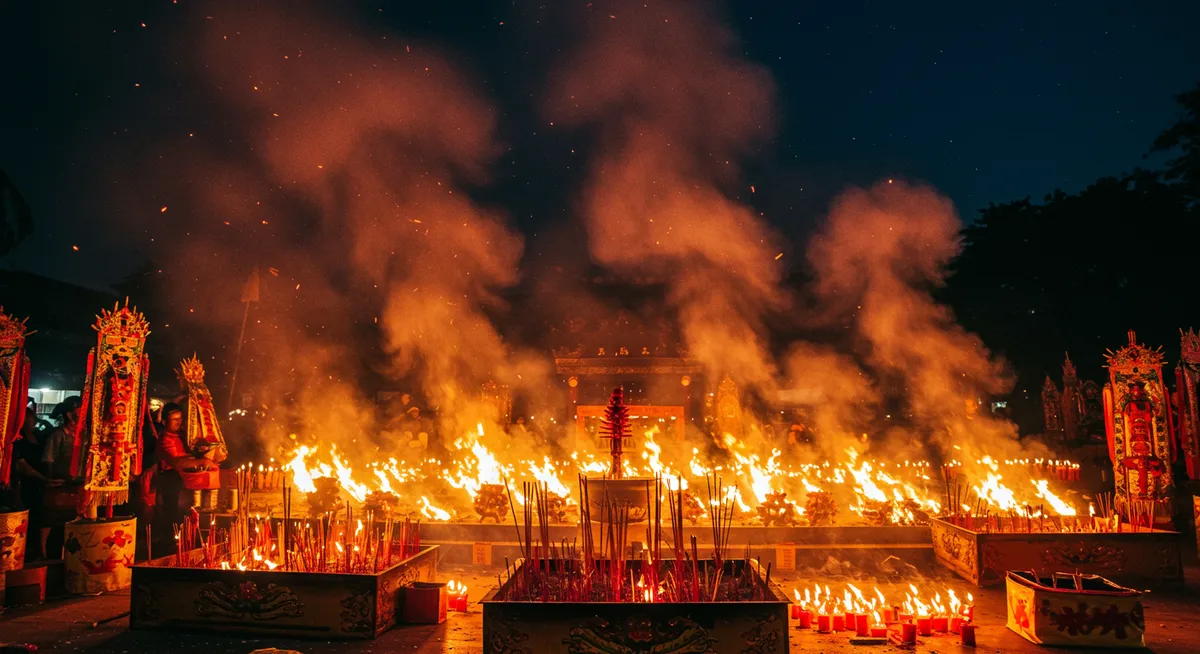
Origins and Religious Foundations
The Ghost Festival emerged from multiple religious traditions that converged across East Asia:
Historical Development
Multiple influences shaped the festival's evolution:
- Ancient Chinese Roots: Originally evolved from traditional Chinese beliefs about ancestors and hungry ghosts requiring care and offerings
- Buddhist Integration: The Yulanpen Sutra introduced the story of Mulian rescuing his mother from the hungry ghost realm through monastic offerings
- Taoist Influences: Incorporated Taoist concepts of cosmic balance and spiritual bureaucracy managing the afterlife
- Confucian Values: Reinforced through emphasis on filial piety and continued responsibility to deceased family members
- Regional Variations: Developed distinct characteristics as it spread throughout East and Southeast Asia
Spiritual Beliefs
Core concepts underpin festival practices across regions:
- Temporary Liberation: During the seventh lunar month, the gates of the underworld open, allowing all spirits to visit the living world
- Ancestral Spirits: Family ancestors return to visit their descendants and receive care and offerings
- Hungry Ghosts: Unfortunate spirits without descendants or who died tragically wander seeking sustenance and recognition
- Karmic Relief: Offerings and rituals can relieve suffering of deceased family members in the afterlife
- Spiritual Danger: Unsatisfied hungry ghosts may cause misfortune if not properly appeased through offerings
Festival Observances Across East Asia
The Ghost Festival takes distinctive forms throughout the region:
Chinese Ghost Festival Traditions
Practices in mainland China, Taiwan, and Chinese diaspora communities:
- Elaborate Offerings: Food, incense, and joss paper items (spirit money, paper clothing, miniature houses, cars, and luxury goods) burned to transfer to ancestors
- Roadside Altars: Temporary offering sites set up on streets with fruit, rice, meat dishes, and burning incense
- Ghost-Feeding Ceremonies: Community rituals where food is presented for wandering spirits before distribution to participants
- Entertainment for Spirits: Chinese opera performances (especially in Hong Kong and Taiwan) with front rows reserved for ghostly audiences
- Water Lantern Release: Paper lanterns set afloat on rivers and lakes to guide lost souls and bring blessings
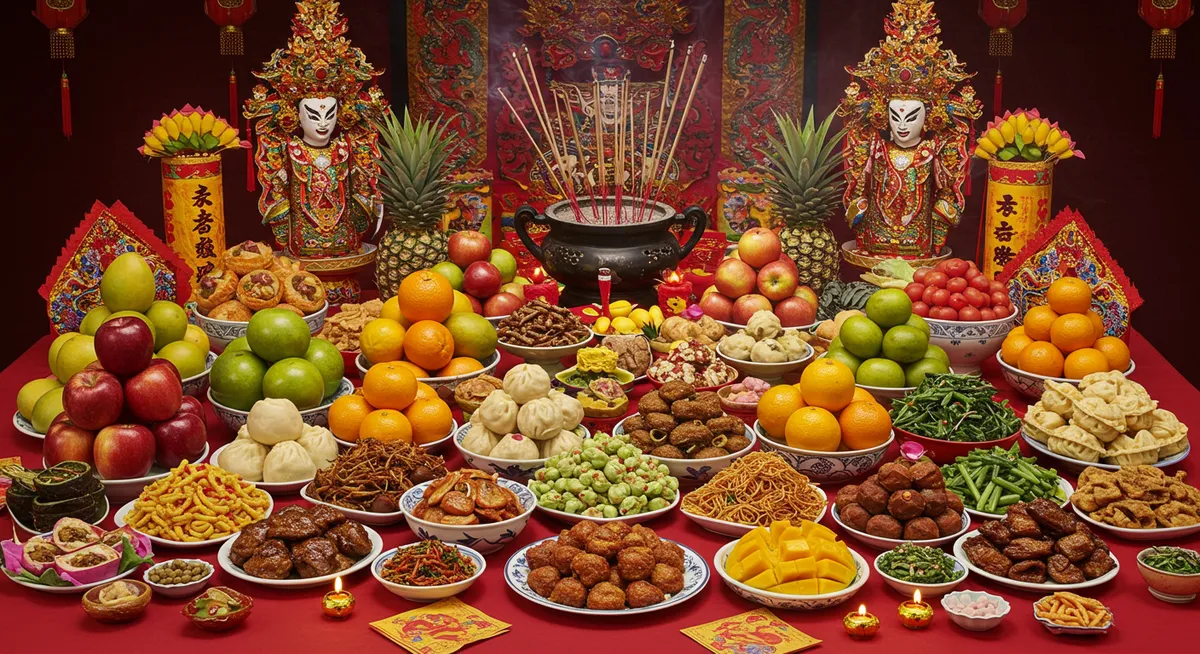
Japanese Obon Festival
Japan's distinctive approach to the ancestral return:
- Bon Odori: Traditional community dances performed in circles around a wooden platform (yagura) with musicians
- Welcoming Fire (Mukaebi): Small fires lit at home entrances to guide ancestral spirits back
- Grave Cleaning: Families visit cemeteries to clean graves and leave offerings before and during Obon
- Cucumber Horses and Eggplant Cows: Symbolic vehicles created for spirits to travel between worlds
- Toro Nagashi: Paper lanterns floated on rivers at festival's end to guide spirits back to the afterlife
- Regional Variations: From the famous Daimonji fire festival in Kyoto to local Bon dance styles across different regions
Southeast Asian Observances
Distinctive practices in Singapore, Malaysia, and other Southeast Asian communities:
- Getai Performances: Vibrant outdoor concerts with singers, dancers, and comedians performing for both living and spirit audiences
- Public Offerings: Large community offering sessions organized by temples and clan associations
- Floating Lanterns: Elaborate paper boats and lanterns released on waterways to guide wandering spirits
- Roadside Burnings: Designated areas for families to burn offerings in urban settings
- Modern Adaptations: Contemporary paper offerings including smartphones, luxury cars, and credit cards
Cultural and Social Significance
Beyond religious observance, the festival serves important social functions:
Family Connections
The festival reinforces kinship bonds:
- Intergenerational Gathering: Families reunite to prepare offerings and perform rituals together
- Ancestral Memory: Younger generations learn family histories and stories of deceased relatives
- Continuing Relationships: Reinforces the concept that death does not end family connections and responsibilities
- Lineage Acknowledgment: Recognition of one's place in an unbroken family line extending into the past
Community Solidarity
The festival strengthens local social bonds:
- Shared Ceremonies: Neighborhood and community-wide rituals create collective experiences
- Public Performances: Entertainment events that bring communities together
- Charitable Element: Distribution of food after offerings and support for those without family
- Cultural Identity: Celebration of shared heritage and traditional values
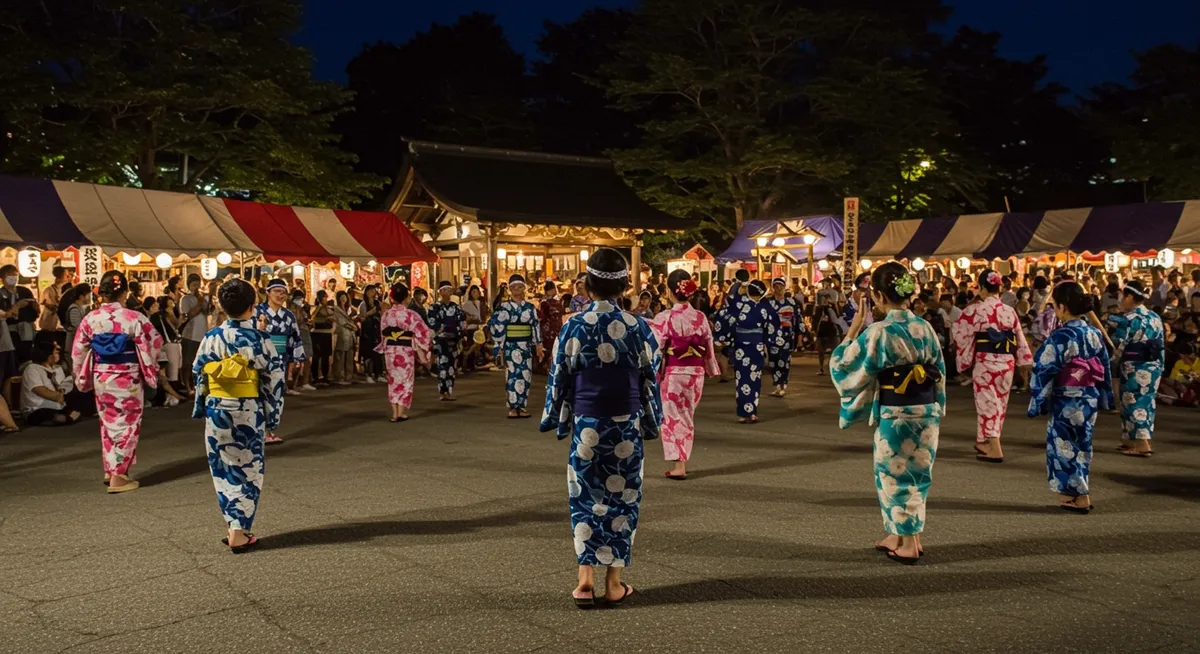
Psychological Functions
The festival helps process grief and mortality:
- Grief Management: Provides structured opportunities to remember and honor those who have died
- Death Acknowledgment: Creates space for communities to acknowledge mortality as part of life
- Continued Connection: Offers comfort through belief in ongoing relationships with deceased loved ones
- Unresolved Relationships: Opportunity to address feelings toward those who have passed away
Regional Variations and Unique Observances
The Ghost Festival takes distinctive forms throughout East Asia:
Taiwan's Distinctive Traditions
Taiwan maintains some of the most elaborate Ghost Month customs:
- Keelung Ghost Festival: Famous water lantern ceremony where thousands of illuminated lanterns are released into the harbor
- Public Offerings Competitions: Communities compete to build the most impressive offering displays on massive tables
- Cabinet-Pulling Rituals: Unique practice in Yilan where teams compete to carry heavy festival cabinets through an obstacle course
- Ghost Month Markets: Special markets selling ritual items and traditional foods
- Ghost Month Taboos: Particularly strong observance of traditional prohibitions during the month
Hong Kong's Urban Adaptations
Dense urban environment has shaped unique observances:
- Roadside Fires: Designated areas in neighborhoods for burning offerings
- Chiu Chow Hungry Ghost Festival: Distinct traditions of the Chiu Chow community with large-scale ceremonies
- Yu Lan Ceremonies: Elaborate rituals performed by Taoist priests in temporary bamboo theaters
- Chinese Street Opera: Traditional performances on temporary stages throughout the territory
- Modern Adaptations: Contemporary paper offerings designed to resemble modern luxuries
Unique Ceremonies in Singapore and Malaysia
Southeast Asian Chinese communities maintain distinctive customs:
- Getai Performances: Elaborate stage shows combining traditional elements with modern entertainment
- Street Operas: Traditional Chinese opera performances held throughout neighborhoods
- Bukit Brown Ceremonies: Special observances at Singapore's historic Chinese cemetery
- Penang Hungry Ghost Festival: Malaysia's most elaborate celebrations with massive community offerings
- Auction Rituals: Community fundraising through auctioning symbolic items and offerings
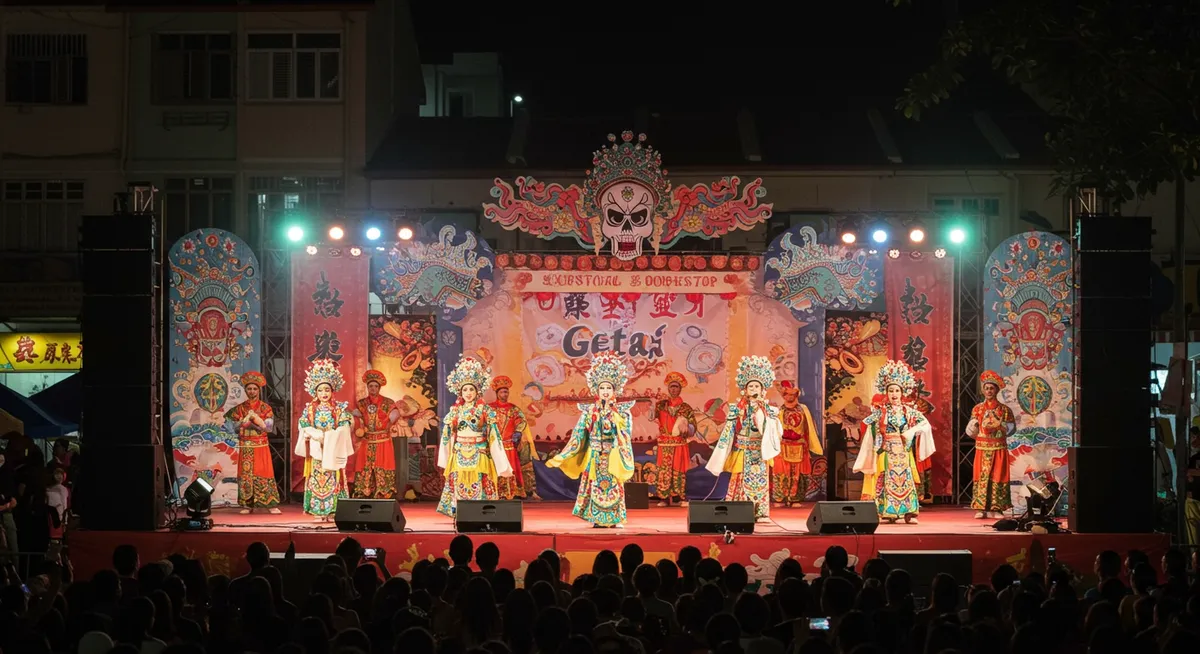
Experiencing the Ghost Festival as a Visitor
For travelers interested in witnessing these traditions:
Observing with Respect
Guidelines for appropriate visitor behavior:
- Quiet Observation: Maintain respectful distance during family rituals and ceremonies
- Photography Etiquette: Ask permission before photographing personal offerings or ceremonies
- Ritual Space Awareness: Avoid stepping over or moving offerings on streets and sidewalks
- Cultural Sensitivity: Approach the festival with respect for genuine religious beliefs, not as theatrical entertainment
- Participation Boundaries: Join public community events when welcome, but respect private family observances
Notable Festival Locations
Exceptional places to experience Ghost Festival traditions:
- Keelung, Taiwan: Home to one of the most visually spectacular Ghost Festival celebrations with water lantern parades
- Kyoto, Japan: The Daimonji Fire Festival creates massive burning symbols on mountainsides during Obon
- Penang, Malaysia: Elaborate street offerings and performances throughout Georgetown
- Chinatowns of Singapore: Concentrated celebrations with numerous getai performances
- Hong Kong's New Territories: Traditional villages maintain centuries-old ritual practices
- Xiamen, China: Traditional ceremonies with strong Minnan cultural elements
Timing Your Visit
Understanding the festival calendar:
- Lunar Calendar Variation: The seventh lunar month falls between July and September in the Gregorian calendar, varying each year
- Peak Periods: The 15th day of the seventh lunar month marks the height of activities in Chinese communities
- Japanese Obon Timing: Celebrated either in July or August depending on the region (most commonly August 13-15)
- Month-Long Observances: In Chinese communities, taboos and practices continue throughout the entire seventh month
- Opening and Closing Ceremonies: Special rituals mark the opening and closing of the gates of the underworld
Modern Transformations and Continuity
The Ghost Festival continues to evolve in contemporary society:
Environmental Adaptations
Traditional practices are being modified for sustainability:
- Eco-Friendly Offerings: Paper burning reductions or alternatives in some urban areas due to air quality concerns
- Electronic Offerings: Digital platforms for making virtual offerings in Taiwan, Hong Kong, and Singapore
- Biodegradable Materials: More environmentally friendly ritual items replacing plastic components
- Regulated Burning Areas: Designated spaces in cities to concentrate and manage ritual fires
- Water Lantern Adaptations: Retrievable or biodegradable lanterns replacing traditional versions
Cultural Preservation Efforts
Communities are working to maintain traditional knowledge:
- Documentation Initiatives: Recording of traditional practices, especially those at risk of disappearing
- Youth Engagement: Programs to involve younger generations in understanding traditional rituals
- Museum Exhibitions: Educational displays about festival history and significance
- Cultural Heritage Recognition: Official designation of certain Ghost Festival practices as protected cultural heritage
- Revival Movements: Communities restoring traditions that had declined in previous decades
Contemporary Relevance
The festival maintains significance in modern life:
- Family Reconnection: Opportunity for scattered family members to reunite around traditional practices
- Cultural Identity: Expression of heritage and values in rapidly changing societies
- Psychological Benefits: Structured opportunities for remembrance and processing grief
- Community Building: Shared experiences that strengthen neighborhood bonds
- Spiritual Continuity: Maintenance of beliefs about death, afterlife, and intergenerational responsibility
Ghost Festival Travel Tips
For the most comprehensive Ghost Festival experience, consider visiting Taiwan or Hong Kong, where traditions remain particularly vibrant. Time your visit to include the 15th day of the seventh lunar month for peak ceremonial activities.
Evening hours provide the most atmospheric experiences, when lantern processions, burning ceremonies, and performances typically take place. Remember to approach all rituals with respect, as these are genuine religious observances for many participants.
Ghost Month Taboos and Beliefs
Traditional precautions observed during the festival period:
Personal Precautions
Individual behaviors traditionally avoided during Ghost Month:
- Night Swimming: Avoiding bodies of water after dark, when drowning ghosts may pull the living under
- Whistling or Singing at Night: Believed to attract ghosts' attention
- Hanging Clothes Outside After Dark: Spirits might try them on and leave negative energy
- Taking Front Row Seats: Leaving these empty for spirit audiences at performances
- Touching Shoulders: A sudden tap might not be from a living person during this time
- Turning When Called From Behind: Looking directly after being called might reveal an unwelcome entity
Major Life Decisions
Activities traditionally postponed during Ghost Month:
- Weddings: Considered inauspicious to hold marriage ceremonies during this period
- Moving House: Relocating might invite unwanted spiritual entities to move with you
- Starting Businesses: New ventures might face spiritual interference or bad luck
- Major Medical Procedures: Elective surgeries traditionally postponed when possible
- Long Journeys: Extended travel might expose one to unknown spiritual territories
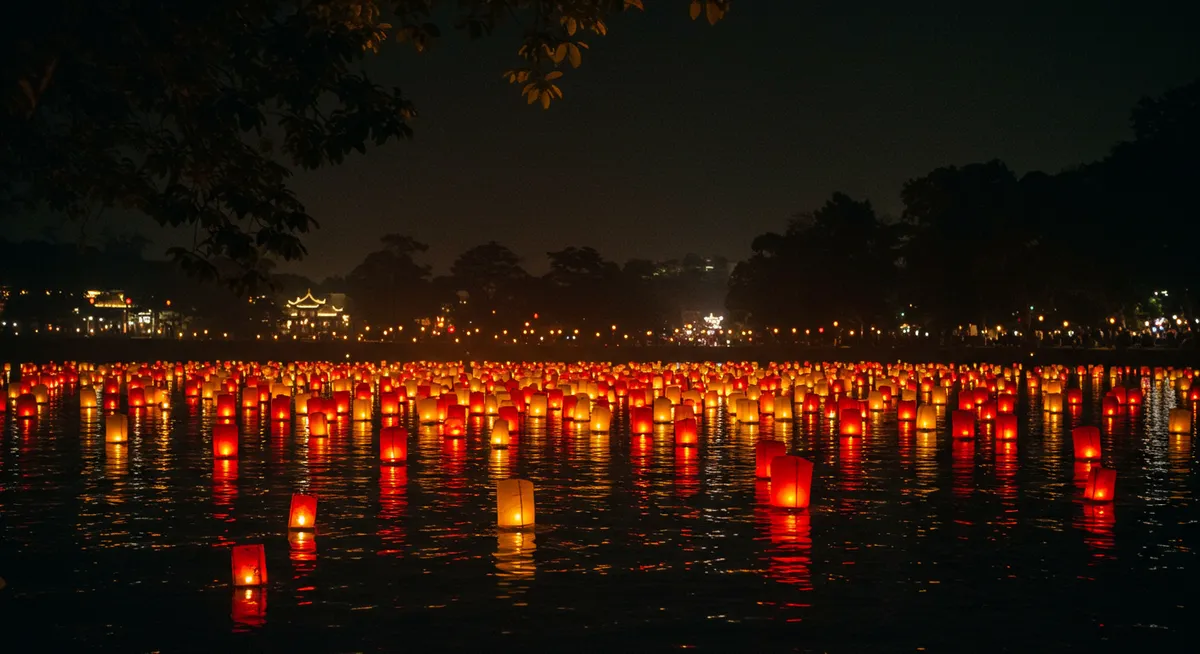
Explore More Asian Cultural Festivals
If you're fascinated by the Ghost Festival, discover other extraordinary Asian celebrations that showcase the continent's rich cultural heritage:
Rainforest World Music Festival
Malaysia's unique celebration of indigenous music traditions in a spectacular jungle setting.
Hornbill Festival
India's "Festival of Festivals" showcasing the diverse tribal cultures of Nagaland.
Vesak: Buddha Day
Buddhism's most sacred festival celebrating Buddha's birth, enlightenment, and passing.
Lunar New Year
East Asia's most important holiday with family reunions, red envelopes, and cultural performances.
Diwali Festival
India's Festival of Lights celebrating the triumph of light over darkness with lamps and fireworks.
Mid-Autumn Festival
East Asian harvest moon celebration with mooncakes, lanterns, and family gatherings.
Return to our Asian Cultural Festivals Guide to discover more extraordinary celebrations across the continent.